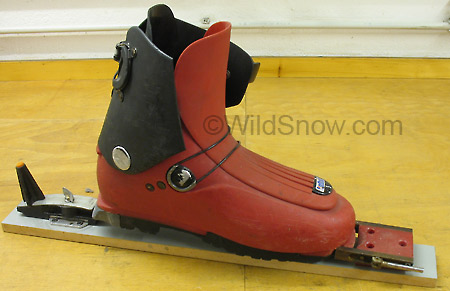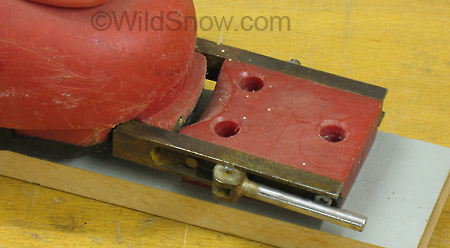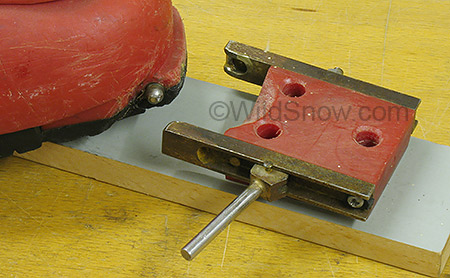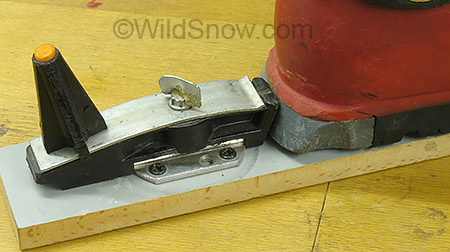Pre Production Prototype Low Tech (Dynafit) Backcountry Skiing Alpine Touring Binding — 1982 1983 1983 — 1st patent 1984

first Low Tech (now Dynafit) binding that binding inventors Manfred and Fritz Barthel actually skied on, during 1982 and 1983.
This is the first Low Tech (now Dynafit, generic term “tech” or “pintech”) binding that binding inventors Manfred and Fritz Barthel actually skied on, during 1982 and 1983. It’s made using the basic concepts of the Ramer ski touring binding of the time, only the boot acts as the Ramer binding frame plate, and the ball/socket system of the Ramer is reversed so the balls are on the ski boot and the sockets mounted on the ski. (Later tech bindings would reverse this configuration, with smaller “pins” on the ski that mated with sockets in the boot.)
The boot is a Koflach Valluga, which at the time was the only shoe the Barthels felt might be strong enough to act as a binding plate. As it turned out, just about any plastic ski boot is stiff enough to do the job.

Detail of toe unit. The lever operates a cam used to lock and unlock the binding for downhill skiing or touring.

Toe unit detail showing retrofitted ball protruding from boot toe. This was later reversed to the present Dynafit concept of pins that seat in sockets at the toe of the boot.

The heel uses a Ramer latch system, only with the rear part of the Ramer binding plate built into the boot heel.
(Epistemology note: “Dynafit” bindings had no name when the prototype above was in use. Later, when the Barthels decided to make and sell the binding they called it “Low Tech.” When producing the binding themselves they chose the Dynafit Tourlite boot to be used with the binding, which led to the Dynafit company licensing and producing the binding, and calling it “Dynafit.”)
This binding is owned by inventor Fritz Barthel and was photographed by Lou Dawson in Austria, it is not present in the WildSnow.com physical binding collection. Thanks goes to Fritz for allowing us to provide this information and photos.
